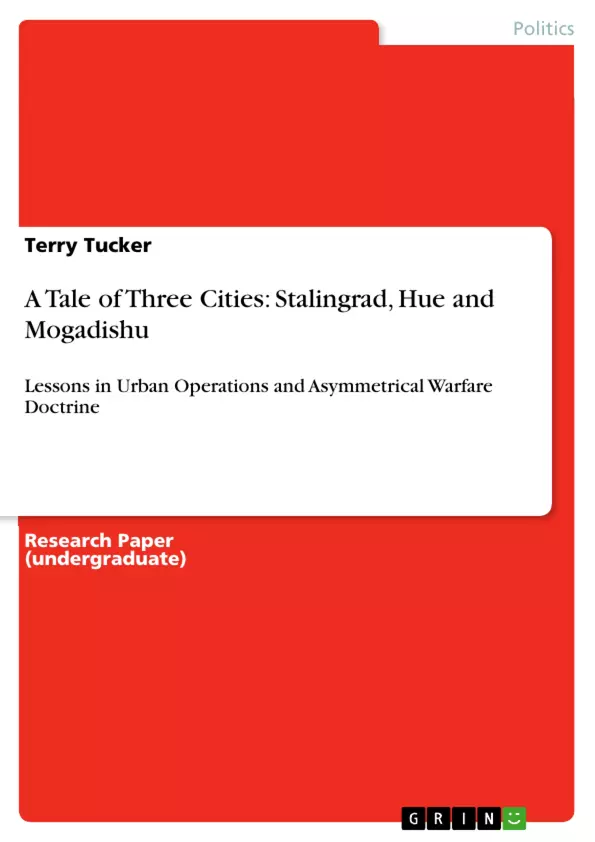This is a 40 page essay on three major urban battles; Stalingrad, Hue and Mogadishu. It offers an analysis and lessons learned for the contemporary operating environment.
Increasingly, urban operations will be a requirement of counterinsurgency. For instance, generally speaking the area known as the Middle East is comprised of 18 Nations; is 4.3 million square miles, had a population of 326 million in 2002. 57% of this population resides in urban areas. For comparison, 25% of the population was urban in 1960 and current projections indicate that by the year 2015 that 70% of the population will be urban. Increasingly, military operations and or counter-insurgency operations within urban areas means that operations will increasingly include a succession of urban operations that literally will cross ethnic and cultural boundaries from one street to the next and will increase the complexity of operations....thus adding another layer of complexity to the hearts and minds campaign.
Inhaltsverzeichnis (Table of Contents)
- Doctrine
- Stalingrad
- Asymmetrical Warfare
- The Battle for Stalingrad
- Modern Lessons
Zielsetzung und Themenschwerpunkte (Objectives and Key Themes)
This paper examines the historical lessons of the Battle of Stalingrad and their relevance to modern asymmetrical warfare. It explores the strategic, operational, and tactical elements of planning and execution, emphasizing the importance of understanding urban warfare and the dynamics of coalition forces in the context of contemporary military doctrine.
- Urban Warfare
- Asymmetrical Warfare
- Coalition Operations
- Strategic and Operational Planning
- Lessons from Stalingrad
Zusammenfassung der Kapitel (Chapter Summaries)
- Doctrine: This section introduces the concept of urban operations and asymmetrical warfare, highlighting their importance in 21st-century conflict. It discusses the evolving definitions of these concepts in contemporary military doctrine.
- Stalingrad: This chapter provides a historical overview of the Battle of Stalingrad, focusing on the strategic and operational decisions made by the German High Command and the challenges they faced in fighting the Soviet Red Army.
- Asymmetrical Warfare: This section explores the lessons learned from Stalingrad regarding asymmetrical warfare, particularly the role of coalition forces, the impact of strategic blunders, and the use of propaganda and disinformation.
- The Battle for Stalingrad: This chapter delves into the tactical and operational aspects of the battle, examining the German and Soviet strategies, the use of combined arms, and the significance of urban warfare.
- Modern Lessons: This section draws parallels between the historical lessons of Stalingrad and contemporary military doctrine, highlighting the relevance of those lessons for modern joint and coalition forces.
Schlüsselwörter (Keywords)
Urban warfare, asymmetrical warfare, coalition operations, strategic and operational planning, Stalingrad, German High Command, Soviet Red Army, propaganda, disinformation, combined arms.
- Citation du texte
- Professor of History Terry Tucker (Auteur), 2010, A Tale of Three Cities: Stalingrad, Hue and Mogadishu , Munich, GRIN Verlag, https://www.grin.com/document/165763



